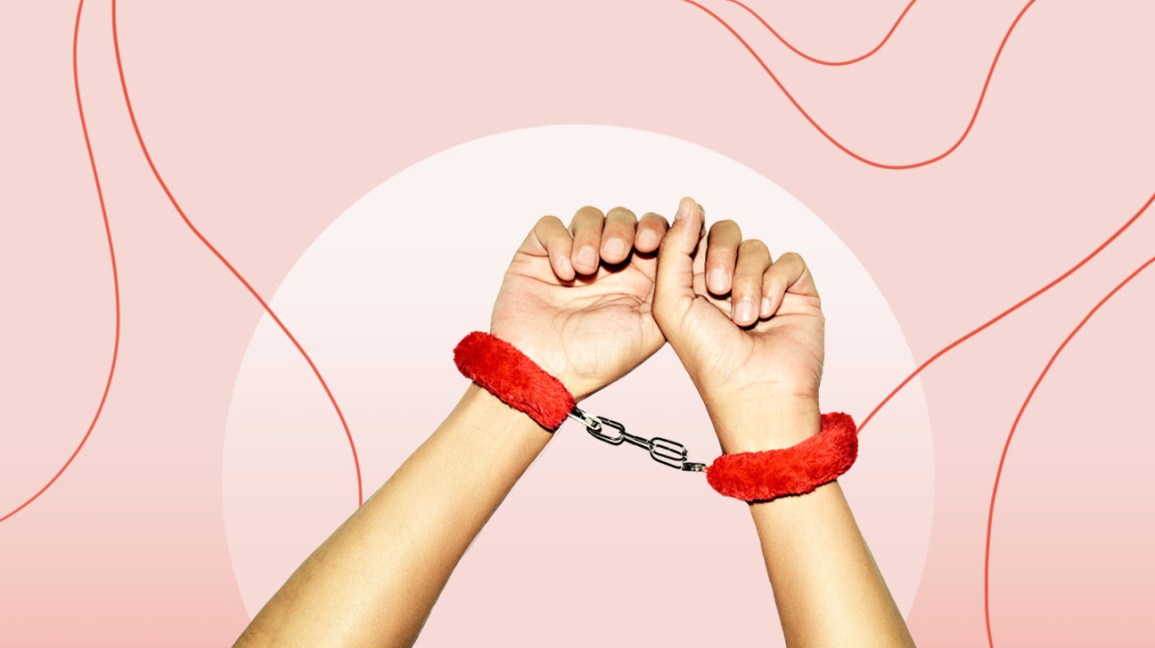The meaning of BDSM varies from person to person; for example, one person may consider power and humiliation to be pleasurable, while another may consider it to be paraphilia (abnormal sexual desires).
While power dynamics have existed in relationships since the beginning of time, BDSM is a catch-all term for the spectrum of kink (i.e., non-normative) partnerships in which one person is identified as the Dominant partner and the other as the submissive.
There may or may not be a total power exchange (TPE) in any given BDSM relationship. Partners can choose to interact according to these roles all of the time (known as 24/7 relationships) or exclusively in the bedroom (known as bedroom partnerships).
To get a sense of the types of roles available to try on for size — and to determine whether or not you might like to experiment a little in this domain of kink yourself — it’s vital to first get a sense of the types of relationships accessible.
Participants in the BDSM are divided into three groups; however, each role or dynamic can be flexible and changing or clearly and purposefully designated as rigid for the course of a relationship.
What are the roles assigned in a BDSM relationship?
1. The dominant one-:
A Dom (male) or domme (female) assumes this role, which involves controlling the other person and the course of events. The dominating partner is in charge of everything during BDSM (from rules to positions). Those who exert control over the connection from afar.

Daddy/Mummy: A phrase used to indicate a dominant who decides to take on the role of a parent to the sub.
Master/Mistress: This phrase is widely used to refer to the dominant who expects varying levels of compliance from the submissive. The master/mistress has complete control over how the submissive is treated.
2. The submissive one-:
Those who surrender to their Dominant’s dominance from the outside. The submit partner must follow the dominant partner’s set of rules and is not allowed to refuse any of the dominant’s commands.
Slave: This phrase refers to a subordinate who is completely dependent on the dominant. In this type of role play, chained collars are frequent.
Brat: This phrase refers to a sub who has misbehaved by refusing to comply with the dominant’s wants and has been punished (sexually or otherwise) for it.

Pet: The dominant refers to the sub as a “pet” (kitty/pony/puppy) and treats her as such. Collars, tails, leashes, and cages are among the tools used in this type of BDSM.
Switches-: Those that are at ease in any job and don’t mind being tied down to one at all times (pun absolutely intended). Sometimes they both switch positions or one of the partners doesn’t mind taking on any of the roles.
3. Important things couples need to know before diving into BDSM relationship-:
All of these partnerships are predicated on both participants’ full consent and enjoyment. Although the role of submissive in particular may appear humiliating to those on the outside, it is an adult’s own business if an adult who is cognitively competent of consent finds it most rewarding to serve the needs of another. Their choices may not be for you, but neither is your life.

These positions and relationships include power exchange rather than power surrender. In the great majority of situations, submission is seen as something that must be won — usually via the respect, honesty, and general character of his or her Dominant. As one of the Dom’s I know once remarked, “The power is truly in the hands of the sub. It’s over if I make a mistake and lose her faith even once.”
As a result, bear this in mind. In terms of gender identity and sexual orientation, all of these roles and relationships are completely interchangeable. Aside from the regulations that a couple adopts for themselves, there are no hard and fast rules. While these are broad notions, one individual who identifies as a Dom may do so differently from someone who identifies as a Daddy or Master.
What are some types of lifestyles in a BDSM relationship?
For dominant
1. Top-:
In the context of BDSM, “top” refers to the dominating partner – the one who ties the knots takes command, gives directions, and so on.

In other cases, a person may be a “service top,” or someone who loves controlling their partner solely as a subservient method of gratifying them or because they’ve been told to.
2. Dom and Domme-:
The fundamental distinction between a Dom (male-identifying) or Domme (female-identifying) and a top is that neither will obey orders from others.

A real Dominant will “issue instructions to a submissive, or otherwise, apply physical or psychological tactics of control… [In order to] direct the submissive to execute the act on them,” as opposed to a top-performing an act like oral sex on a bottom at the bottom’s command.
3. Daddy or Mommy-:
“A small modification from a standard dominant… in that, they must consider their sub’s inner child dynamic,” says a Daddy Dom. “Daddy Doms are normally in complete charge… but also have to take care of their baby girl’s social and emotional well-being because their sub is in a somewhat different mental space than regular subs,” says the author.

Fathers and mothers like indulging, praising, disciplining, and punishing their “little’s” as they see fit, and consider themselves guardians. These are often loving, long-term partnerships that may or may not include some amount of age play.
For submissive-:
1. Bottom-:
In the same way, “bottom” refers to a subordinate partner who is being tied, spanked, directed, and so forth. A bottom might also be someone who appreciates submitting in restricted circumstances.

“In BDSM, a bottom does not have to be the receptive partner; for example, a female dominant may compel her submissive to penetrate her,” says the author.
2. Slave-:
Someone who agrees to give oneself as property of their owner is referred to as a slave in the BDSM lifestyle.
A slave contract, defined as “a document that specifies the wants, restrictions, and expectations of [both] parties,” may include duties, expectations, permissible sorts of sexual activity, dress, diet, routines, and more.

Furthermore, these contracts frequently include “clear expectations of whether the relationship would be monogamous or polyamorous, as well as if there will be permission or expectation of sexual involvement with other individuals.” Either party has the right to declare the contract invalid at any moment.
Dr. Stephanie Hunter Jones, a professional sex therapist, helps couples integrate BDSM into their beds, she addresses that “It definitely makes a difference for damaged relationships,” Many couples engage in the lifestyle, which includes sexual behaviors such as dominance, bondage, and sadomasochism, on a daily basis.






